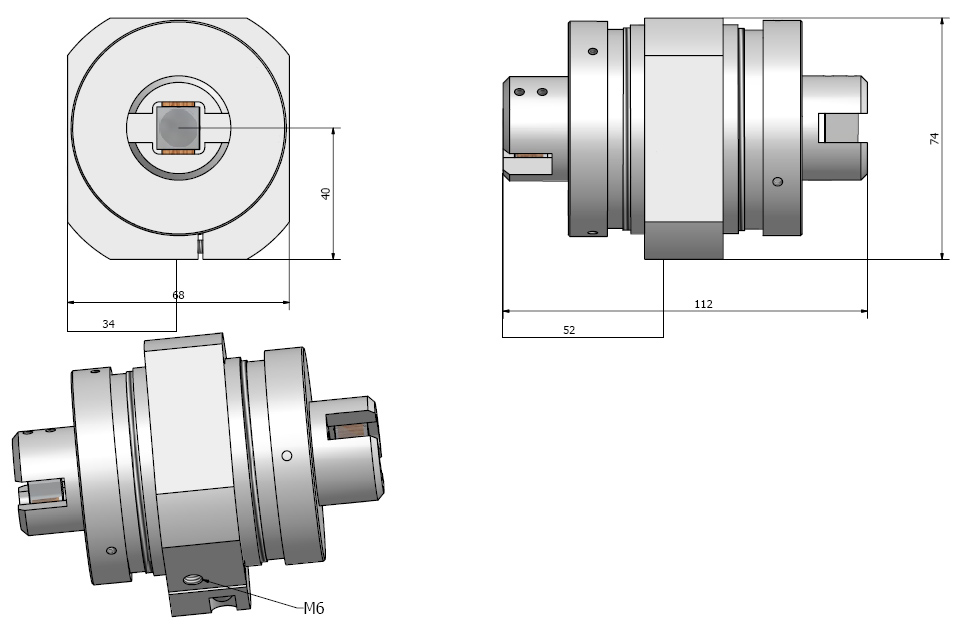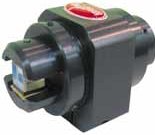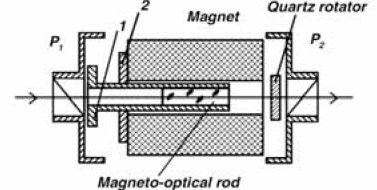
Del Mar Photonics -
Newsletter Fall 2010 -
Newsletter Winter 2010
>I would like some pricing information on your Faraday isolators. I am looking
for two isolators to used in a pulse Nd:YAG laser system at 1064 nm. The beam
size for one will be >~6 mm and for the 2nd will be ~9 mm. The pulse energy will
be on the order of 100 mJ in a 10 nsec pulse.
Kirra Faraday Isolator -
dimensions
Model: 8AFI38-1064C
Aperture: 8 mm
Operating wavelength: 1064 nm
Isolation: >38 dB
Transmission: >90%
Rod material: TGG
$3,300.-
Kirra Faraday Isolator
Model: 10AFI38-1064C
Aperture: 10 mm
Operating wavelength: 1064 nm
Isolation: >38 dB
Transmission: >90%
Rod material: TGG
$3.840.-
Kirra Faraday Isolator
Model: 12AFI38-1064C or 12 AFI38-1064C-LP
Aperture: 12 mm
Operating wavelength: 1064 nm
Isolation: >38 dB
Transmission: >90%
Rod material: TGG
$5.140.-
At 12 mm we have 2 models:
Kirra 12AFI38-1064C

Kirra 12 AFI38-1064C-LP

Q & A - What is a Faraday Optical Isolator and How Does it Work?
Del Mar Photonics - Kirra Faraday Isolator brochure - Faraday Isolator Models
At high powers optical feedback can damage or disrupt the operation of a
laser system. To reduce this feedback, an optical isolator can be inserted into
the system. Faraday optical isolators (based on the Faraday effect) are passive
unidirectional, nonreciprocal devices that utilize the phenomenon of
magneto-optic
 rotation
to isolate the source and protect the laser oscillator from reflections in an
optical system. In other words, they basically act as an optical diode allowing
the propagation of light in only one direction.
rotation
to isolate the source and protect the laser oscillator from reflections in an
optical system. In other words, they basically act as an optical diode allowing
the propagation of light in only one direction.
Faraday isolators (see Figure 1) typically consist of a Faraday rotator, two
polarizers, and a body to house the parts. The Faraday rotator, in turn,
consists of magnetooptically active optical material placed inside a permanent
magnet (Nd-Fe-B).
In the Faraday optical isolator shown in Figure 2, the magneto-optical rod
(located inside the Faraday rotator) is cut from glass (MOS-10) polished to
flatness of
![]() /10, and
has parallelism better than 10 arc seconds.
/10, and
has parallelism better than 10 arc seconds.
 It
is anti-reflection coated with residual reflection <0.2% (each side) in the
765-835 nm range. The polarizers are air-spaced Glan prisms made of calcite.
Entrance and exit faces of polarizers are anti-reflection coated with residual
reflection of <0.3% in the range. Polarizer transmittance is >98%. This gives a
total transmittance of better than 85% for the isolator.
It
is anti-reflection coated with residual reflection <0.2% (each side) in the
765-835 nm range. The polarizers are air-spaced Glan prisms made of calcite.
Entrance and exit faces of polarizers are anti-reflection coated with residual
reflection of <0.3% in the range. Polarizer transmittance is >98%. This gives a
total transmittance of better than 85% for the isolator.
Laser light (polarized or unpolarized) enters the input polarizer (P1) and is linearly polarized to 0°. Next, the linearly polarized light enters the Faraday rotator rod (magneto-optical rod). The plane of polarization rotates as the light propagates along the axis of the rod. The Faraday rotator is tuned to rotate the plane of polarization by 45°. (Changing the position of the rod allows tuning over a wavelength range from 765-835 nm.) The light then passes through the output polarizer (P2) whose transmission axis is also at 45°.
Any back reflected light re-enters the isolator through the output polarizer and becomes polarized at 45°. The back reflected light then passes through the Faraday rotator, which produces another 45° of rotation, and is now polarized at 90°, or horizontally, before being stopped by the input polarizer, still at 0°. Thus, the laser is isolated from its own reflections that may occur in the application part of the optical set.
This information was contributed by Sergey Egorov for Del Mar Photonics, located in San Diego, CA.
Del Mar Photonics - Kirra Faraday Isolator brochure - Faraday Isolator Models
Kirra Faraday Optical Isolators - 2-photon - 1030-1080nm High Power Free Space Faraday Isolators - 5AFI36- 800B broadband Faraday Isolator, to work with femtosecond Ti:sapphire lasers - Kirra Faraday Rotators and Isolators for Ti:Sapphire Laser - Kirra Faraday Rotators and Isolators for 1064 nm - Q&A - Faraday isolators for pulsed Nd:YAG laser system at 1064 nm